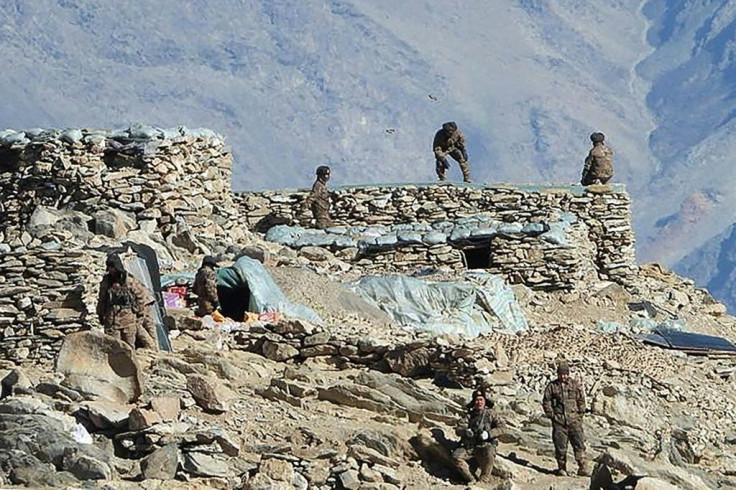India-China Border Tension: PLA Rotates Forces, Reinforces Border Infrastructure
KEY POINTS
- China ’s recent move shows it has no plans to de-escalate tensions with India
- The India-China border dispute covers the 3,488-km-long LAC
- Despite several military-level talks, tensions continue
India and China, the two Asian giants, were last year engaged in their “biggest confrontation” at the Line of Actual Control (LAC) after the Doklam episode in 2017. Indian and Chinese troops clashed for over three weeks in Pangong Tso, Galwan Valley, Demchok and Daulat Beg Oldie in eastern Ladakh. A year after the first standoff in Pangong Tso, Beijing is further reinforcing its military positions and rotating forces along the border.
The India-China border row relates to the 3,488-km-long LAC. Beijing claims Arunachal Pradesh as part of southern Tibet while New Delhi disputes it. The two countries are competing to build infrastructure along the LAC. In 2020, India's construction of a new road to a high-altitude airbase was said to have triggered a clash with Chinese troops in June.
Both sides participated in several military-level talks, but tensions continue and India-China relations have been worsening.

On Wednesday, the Times of India reported that China’s latest move of reinforcing military positions shows it has no plans to de-escalate tensions anytime soon. It said that the People’s Liberation Army (PLA) is currently busy in “converting the temporary structures, helipads, ammunition dumps and surface-to-air missile positions it set up in 2020 in ‘depth areas’ -- ranging from 25 to 120-km from the LAC, into permanent positions.”
The report cited a senior officer as saying that though there is no increase in PLA troops on the frontlines in eastern Ladakh, “China continues to maintain sizable forces in the areas to the rear of the friction points, where it reinforces military positions all along the frontier in the region.”
Expressing concern, the official said the PLA can easily move forces much faster to the LAC due to better road and connectivity. The Rutog Country Area, only 100-km away from Pangong Tso, has recently witnessed a lot of movement.
Beijing is building roads, military camps, missile positions and other infrastructure in the LAC -- stretching from Ladakh to Arunachal Pradesh. Also, several Chinese airbases such as Kashgar, Hotan and Shigatse, among others, are reportedly increasing their capacities for additional bombers and fighters.
The year 2020 was a particularly violent year for India and China. The first skirmish between the two sides took place on the north bank of Pangong Tso in May. Dozens of Indian and Chinese soldiers were injured in the clash. The next one was reported at Naku La in north Sikkim in the same month.
In June 2020, violent skirmishes -- sticks and clubs, not guns -- took place in Galwan Valley. Both sides suffered causalities for the first time in 45 years. Between Aug. 29 and Sept. 8, several “warning shots” were exchanged between Indian and Chinese troops in the Kailash Range-Chushul sector.
In January 2021, the two armies clashed again in north Sikkim, with injuries on both sides. The Indian Army, however, called it a “minor incident” that was resolved.
© Copyright IBTimes 2024. All rights reserved.




















